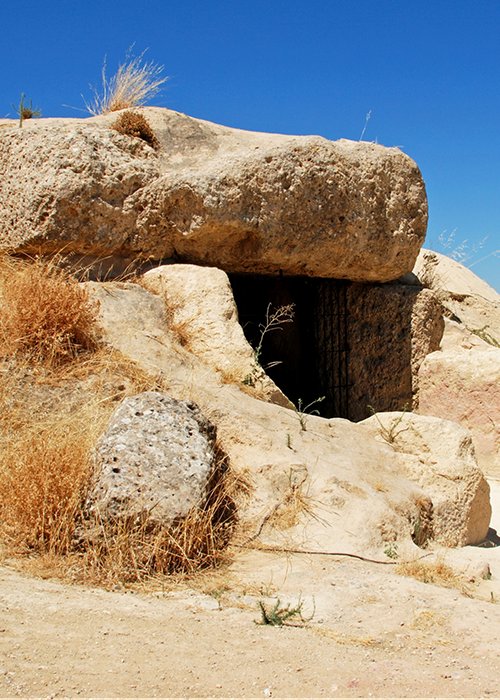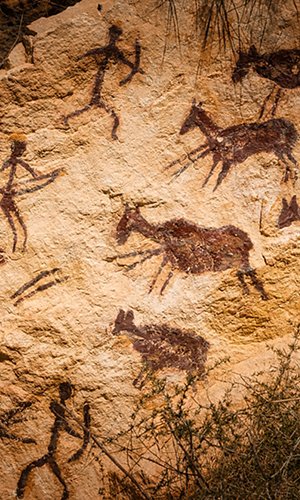The Dolmen of Menga is a megalithic burial chamber located in southern Spain, built approximately 6,000 years ago by Neolithic farmers and herders. Its construction predates, by about 1,000 years, the world's most famous megalithic monument: the Stonehenge stone circle in England. Recent studies reveal that Neolithic farmers and herders possessed a remarkable knowledge of physics, geometry, geology, and architectural principles, and they successfully applied this knowledge in the construction of this impressive structure.
The dolmen consists of a rectangular chamber, about 28 metres long, 6 metres wide, and 3.5 metres high. To give an idea of its size, it’s worth noting that the largest stone used in the construction of Stonehenge weighs around 30 tonnes, while one of the capstones of the Dolmen of Menga weighs about 150 tonnes. The builders used 32 huge stone blocks, transported from a quarry about a kilometre away. The choice of materials, such as sandstone for the roof, suggests a remarkable understanding of the geological properties of rocks. The burial chamber is constructed from stone walls, pillars, and a roof, all meticulously arranged in line with precise architectural principles. The vertical slabs were set into deep cavities carved into the rock, with near-perfect precision achieved through the use of counterweights and ramps. Laser scans have confirmed the exceptional craftsmanship in both the shaping and assembly of the stones, revealing flawless joints and a meticulous attention to dimensions and angles.
The construction of the Dolmen of Menga posed numerous challenges, all of which were overcome thanks to a knowledge of physics, geometry, and geology – an astonishing feat considering that the structure was erected in the Neolithic era. Moving stone blocks of such immense size and weight was a herculean task. esearchers believe that wooden tracks were likely employed to reduce friction during transportation, a technique that required careful planning and a deep understanding of physical principles. Positioning the enormous vertical slabs in the cavities and tilting them with millimetric precision was another complex challenge. The use of counterweights, ramps, and the carving of perfect joints demonstrate a remarkable engineering expertise and a thorough comprehension of geometry.
Unlike Stonehenge, the Dolmen of Menga is located in a seismic zone. Its ability to withstand earthquakes for nearly 6,000 years is a testament to the effectiveness of the construction techniques and the profound knowledge of materials possessed by its builders.
The construction of the Dolmen of Menga was an extraordinary feat that required ingenuity, meticulous planning, and an in-depth knowledge of science and engineering. Despite lacking modern tools, the builders successfully overcame these challenges, and realised a monument that continues to inspire wonder and admiration to this day.


